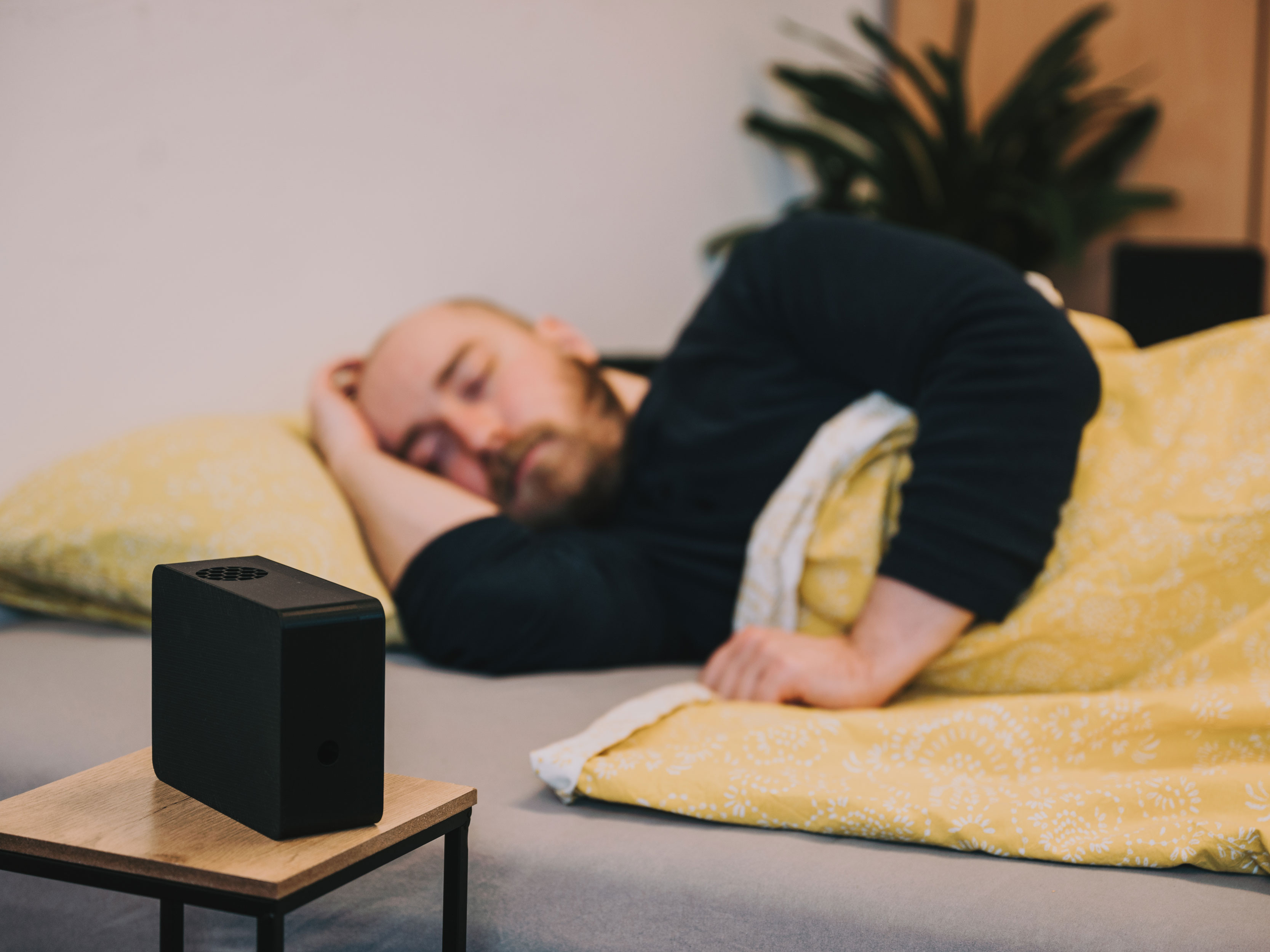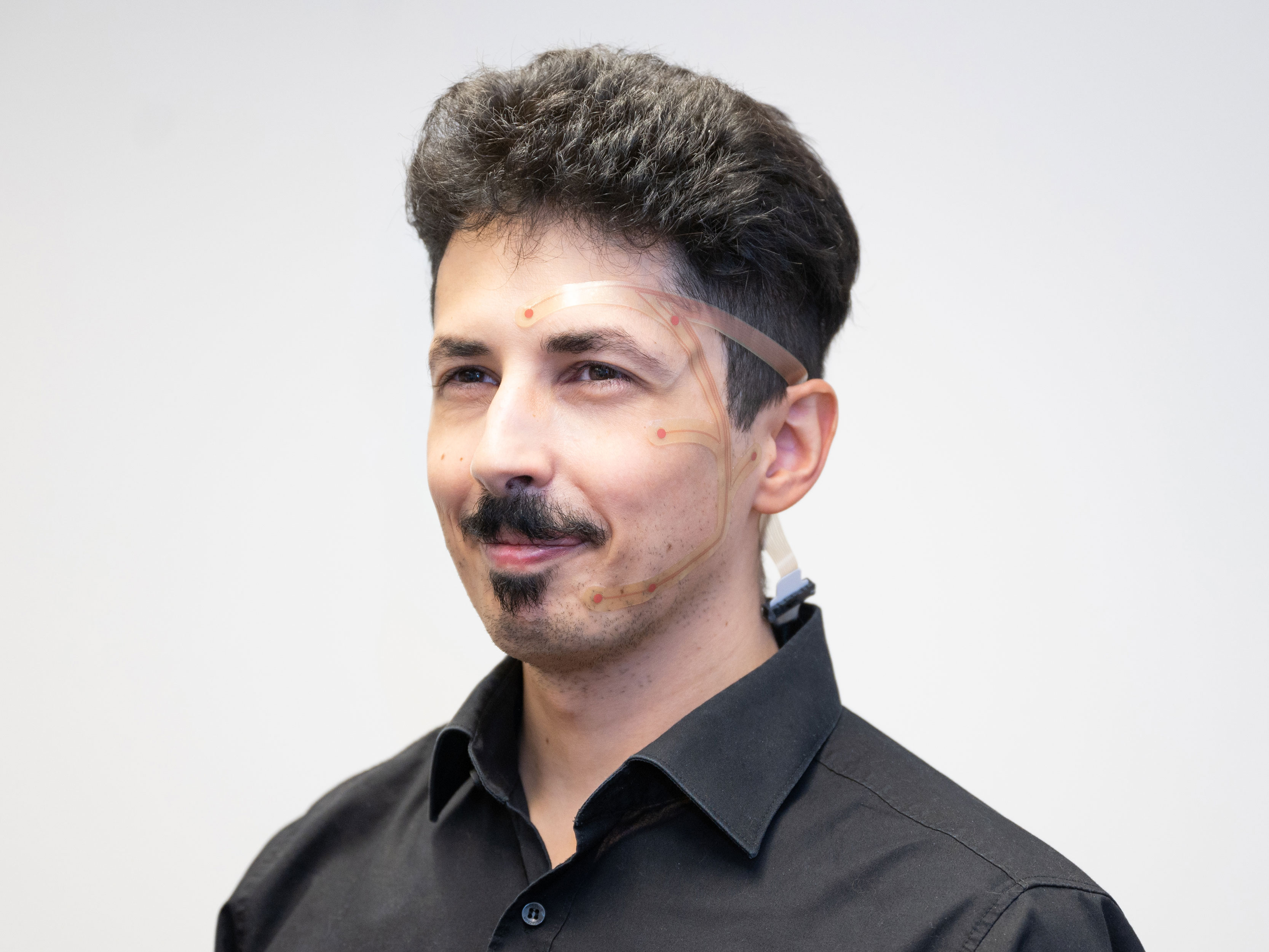DGSM 2022: Fraunhofer IDMT presents technologies and methods for mobile sleep monitoring
The Fraunhofer IDMT's Oldenburg Branch will present its application-specific service portfolio at the 30th annual conference of the German Society for Sleep Research and Sleep Medicine (DGSM) from November 10 to 12, 2022. The experts will present discreet and comfortable sensor systems that enable sleep monitoring outside the sleep laboratory.


Sleep disorders are complex and often have negative effects on health. But getting to the bottom of the problems is not easy: A visit to the sleep laboratory is usually connected with long waiting times. In addition, the time-consuming data collection only takes place over a very limited observation period. Researchers at Fraunhofer Institute for Digital Media Technology IDMT therefore see great potential in repeated, nightly monitoring of relevant vital data and events at home. They are working on discreet and comfortable sensor solutions as well as innovative approaches for sleep monitoring at home. One focus is on the convenient recording of brain activities in the form of an electroencephalogram (EEG), which can be performed by the patients themselves, as well as on the monitoring of respiratory parameters.
Contactless respiration monitoring with radar technology
Long-term bad sleep is a serious problem. Among other things, it increases the risk of daytime sleepiness. This is particularly the case with breathing-related sleep problems, such as chronic obstructive pulmonary disease (COPD), which is associated with narrowing (obstruction) of the airways. In the case of the sleep-related breathing disorder »sleep apnea«, nocturnal pauses in breathing carry a high risk of secondary diseases. In such cases, monitoring breathing during sleep can be crucial. Continuous monitoring of respiratory parameters can also detect a worsening of the patient's condition at an early stage in hospital and nursing care. However, this is not always possible due to the high effort required. Moreover, the sensors, which have to be worn directly on the body, are often perceived as irritating.
In their project »REMUS« (Respiration Measurement Using Sensors), the experts at Fraunhofer IDMT in Oldenburg are working on a contactless, hygienic, and easy-to-set-up monitoring of breathing and other vital parameters, such as heart rate. »The radar technology divides the bed in the field of view into different sections in which different vital signs of the sleeper or acoustic events, such as snoring or coughing, can be detected even through the blanket. The method allows measurements to be taken over long periods of time – without restricting freedom of movement in bed or requiring major disinfection and maintenance«, explains Dr. Insa Wolf, Head of Mobile Neurotechnologies at the Institute´s Oldenburg Branch.
Flexible electrode patch for recording EEG, EOG and EMG
The central component of a polysomnography, in short a detailed examination in the sleep laboratory, is the EEG, because the measurement of brain activity with the help of electrodes enables decisive conclusions about sleep phases and specific characteristics during sleep. The sensor technologies developed by the Institute's Oldenburg Branch for Hearing, Speech and Audio Technology HSA enable recording of the EEG outside the sleep laboratory with equally high data quality. Easy-to-apply, discreet and flexible electrode patches are placed in the facial area and behind the ear. For the most meaningful data possible, in addition to the EEG, eye movements can be recorded by an electrooculogram (EOG) and muscle movements in the face by an electromyogram (EMG) in one application.
Application-specific developments from sensor technology to data analysis
The solutions presented at the DGSM annual conference in Wiesbaden are particularly addressed to companies in the field of consumer health, manufacturers of medical devices for acquisition of vital signs, and clinicians who are considering out-of-home measurements and want to familiarize themselves with the new technologies. Also combinable with each other, they can significantly improve care for people with sleep problems. The expertise of the Mobile Neurotechnologies group covers the entire development process from sensor development, data acquisition and pre-processing to analysis. Customers and partners are also supported in the identification of specific use cases and their requirements as well as in providing proof of concept in realistic environments.
Meet the contact persons of Fraunhofer IDMT in Oldenburg from November 10 to 12, 2022 at the 30th Annual Meeting of the German Sleep Research and Sleep Medicine Society (DGSM) in Wiesbaden. We would be happy to talk to you about individual project ideas and present our technology approaches in detail. We are looking forward to meeting you!
Hearing, Speech and Audio Technology HSA at Fraunhofer IDMT in Oldenburg
Founded in 2008 by Prof. Dr. Dr. Birger Kollmeier and Dr. Jens-E. Appell, the Fraunhofer Institute for Digital Media Technology IDMT’s Branch for Hearing, Speech and Audio Technology HSA stands for market-oriented research and development with a focus on the following areas:
- Speech and event recognition
- Sound quality and speech intelligibility
- Mobile neurotechnology and systems for networked healthcare
With in-house expertise in the development of hardware and software systems for audio system technology and signal enhancement, over 100 employees at the Oldenburg site are responsible for transferring scientific findings into practical, customer-oriented solutions.
Through scientific cooperation, the institute is closely linked to the Carl von Ossietzky University, Jade University of Applied Sciences, and the University of Applied Sciences Emden/Leer. Fraunhofer IDMT is a partner in the »Hearing4all« cluster of excellence.
The Oldenburg Branch for Hearing, Speech and Audio Technology HSA is funded in the program »Vorab« by the Lower Saxony Ministry of Science and Culture (MWK) and the Volkswagen Foundation for its further development.
Last modified:
 Fraunhofer Institute for Digital Media Technology IDMT
Fraunhofer Institute for Digital Media Technology IDMT